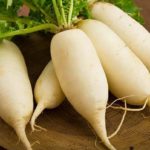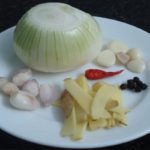Freezing fruits and vegetables for later use is an effective food preservation method, allowing us to enjoy fresh produce year-round. However, to maximize the benefits of this method, we need to know how to freeze them properly.
1 The Purpose of Freezing Fruits and Vegetables
A diet rich in plant-based foods, especially fruits and vegetables, is essential for a healthy lifestyle. These foods are packed with vitamins, minerals, and essential nutrients. However, preserving these precious nutrients from the farm to the table is no easy task.
Many fruits and vegetables reach their perfect ripeness only during a short period each year, and this is when they have the highest nutritional content. However, after harvest, these fresh foods quickly undergo oxidation and lose their nutritional value. Prolonged transportation further contributes to nutrient degradation.
Freezing is the optimal solution to preserve the flavor and nutritional value of fruits and vegetables. By quickly chilling them, we can maintain their color, texture, and vitamin and mineral content as if they were freshly harvested.
 The Purpose of Freezing Fruits and Vegetables
The Purpose of Freezing Fruits and Vegetables
2 Do Frozen Fruits and Vegetables Lose Nutrients?
Immediately after harvest, fresh fruits and vegetables begin to undergo natural changes, leading to a loss of freshness and nutritional value. To preserve their flavor and nutrients effectively, quick freezing is the preferred method.
Fresh fruits and vegetables contain natural enzymes. If not treated promptly, these enzymes continue to act, causing chemical reactions that result in loss of color, altered flavors, and reduced vitamin content.
To halt this process, a technique called blanching is often employed, involving briefly dipping the produce in boiling water or steam. This process deactivates the enzymes, kills some bacteria, and slows down ripening. After blanching, the produce is quickly chilled for optimal preservation.
Thanks to modern freezing technology, commercially frozen fruits and vegetables are typically harvested at their peak ripeness. This allows us to enjoy fresh, nutritious produce year-round without worrying about nutrient loss.
 Do Frozen Fruits and Vegetables Lose Nutrients?
Do Frozen Fruits and Vegetables Lose Nutrients?
3 Changes in Food Structure During Freezing
Most fruits and vegetables contain a high amount of water, which plays a crucial role in their structure and texture. When frozen, the water inside plant cells turns into ice crystals. The expansion of these ice crystals can rupture cell walls, resulting in structural changes to the product.
After thawing, fruits and vegetables often become soft and lose their crispness. This is because their cell walls have been damaged during freezing. For example, a frozen tomato, when thawed, becomes mushy and watery.
To enjoy the best flavor and texture of frozen fruits and vegetables, experts recommend using them while still frozen or partially thawed. This helps retain some of their original crispness and structure.
For starchy vegetables like potatoes and sweet potatoes, the structural changes caused by freezing are less noticeable. Moreover, since these vegetables are typically cooked, the impact of freezing on their texture is negligible.
 Changes in Food Structure During Freezing
Changes in Food Structure During Freezing
4 How to Freeze Fruits and Vegetables Safely and Without Losing Nutrients
According to the University of Minnesota’s Guide to Freezing Fresh Produce, freezing is the most effective way to preserve fruits and vegetables, maximizing the retention of vitamins and minerals. For best results, keep the following in mind:
Freeze as Quickly as Possible
To maintain the crispness and sweetness of fruits and vegetables and preserve their nutritional content after freezing, it’s crucial to freeze them as quickly as possible. Rapid freezing forms tiny ice crystals in the cells. These small crystals cause less damage to the cells compared to larger crystals that form during slow freezing. As a result, the produce retains its structure and quality better.
Tips for Home Freezing:
-
Pre-chill your freezer: Before placing fruits and vegetables in the freezer, set the temperature to the lowest setting and let it run for a few hours to ensure it’s sufficiently cold.
-
Choose the right location: Many freezers have colder spots or drawers. Place your produce in these areas for the quickest and most efficient freezing.
-
Use airtight packaging: Opt for airtight bags or containers to minimize air contact, ensuring even freezing and reducing nutrient loss.
 How to Freeze Fruits and Vegetables Safely and Without Losing Nutrients
How to Freeze Fruits and Vegetables Safely and Without Losing Nutrients
Avoid Overloading Your Freezer
Putting too much fresh produce in the freezer at once can overload it, causing it to work less efficiently. This results in slower cooling, creating an environment conducive to bacterial growth and reduced food quality.
Additionally, when the freezer is packed with food, cold air circulation becomes hindered, leading to uneven cooling and potential spoilage. To ensure your food stays fresh, follow the manufacturer’s guidelines on maximum freezer capacity.
Check Your Frozen Foods Regularly
While freezing slows bacterial growth, it doesn’t eliminate all microorganisms present in food. Therefore, if frozen food thaws and is left at room temperature for too long, bacteria can proliferate and cause spoilage.
Before using frozen produce, carefully inspect it, especially if it has thawed due to a power outage or an open freezer door. If you notice any strange odors, color changes, or liquid leakage, discard the food immediately to prevent foodborne illnesses.
 Check Your Frozen Foods Regularly
Check Your Frozen Foods Regularly
Minimize Air Exposure During Freezing
To maintain the freshness and quality of frozen foods, it’s crucial to minimize their exposure to air. When exposed to air, especially oxygen, food is prone to oxidation, leading to spoilage, discoloration, and flavor changes.
Use airtight containers or zip-top bags, and ensure they are completely sealed before placing the food inside. If you have a vacuum sealer, use it to remove all the air from the bags.
Additionally, portion your produce into serving sizes before freezing to reduce the need for frequent opening and closing of the freezer door.
Recommended Freezing Times for Fruits and Vegetables
While frozen foods can be stored for extended periods, their quality gradually diminishes over time. If you consume food that has exceeded its recommended storage time, you may notice significant changes in flavor, color, and texture. In some cases, the nutritional value may also be affected.
To enjoy the optimal freshness and flavor of frozen fruits and vegetables, aim to use them within 8-12 months from the date of freezing. However, this duration may vary depending on the type of produce and storage conditions. Always check the use-by date on the packaging to ensure safety and the best quality.
Properly freezing and storing your produce not only saves you money but also helps reduce food waste. By understanding the principles of food preservation, we can make the most of our available food resources and contribute to environmental protection.
Source: Sức Khỏe Và Đời Sống Newspaper
More Useful Advice for Homemakers (Part 2)
Have you heard of the surprisingly easy tips to make cooking and household chores simpler? White radish eliminates the acrid taste of salted meat, adding alum to raw shrimp helps soften it, and adding cold water when frying eggs can make them crispy – these are just a few of the tricks to make your life easier.
Is Refrigerated Leftovers Linked to an Increased Risk of Cancer?
Dr. Lam Van Man, Head of Research, Development and Technology Transfer Department of the Institute of Safety Food, has warned of the risk of food poisoning when reheating leftovers from the refrigerator. But what should we be aware of when it comes to the possibility of these leftovers causing cancer? Here, we explore what the experts have to say on the matter and offer some tips for safe eating.




































